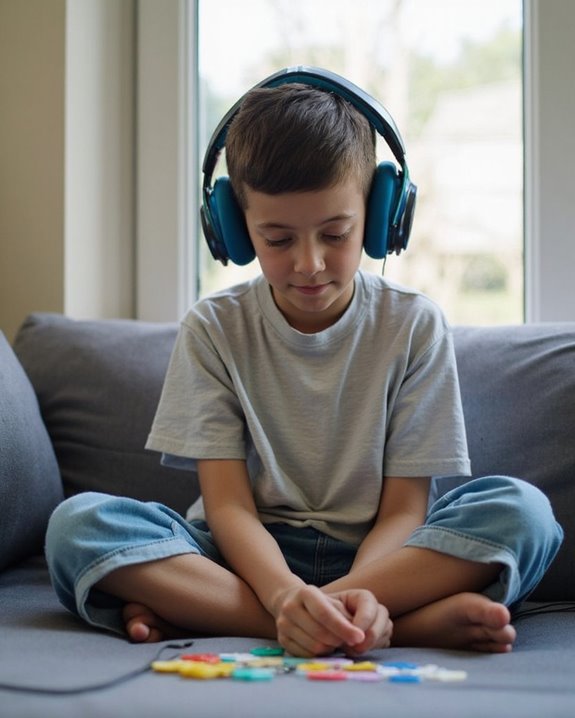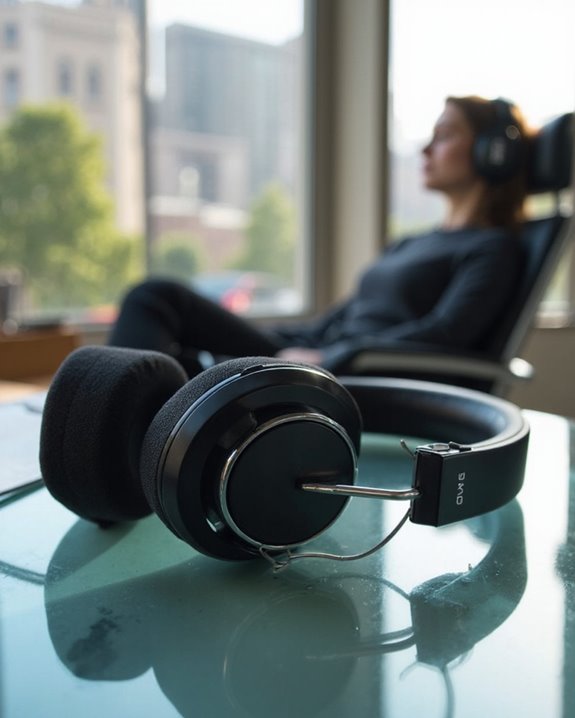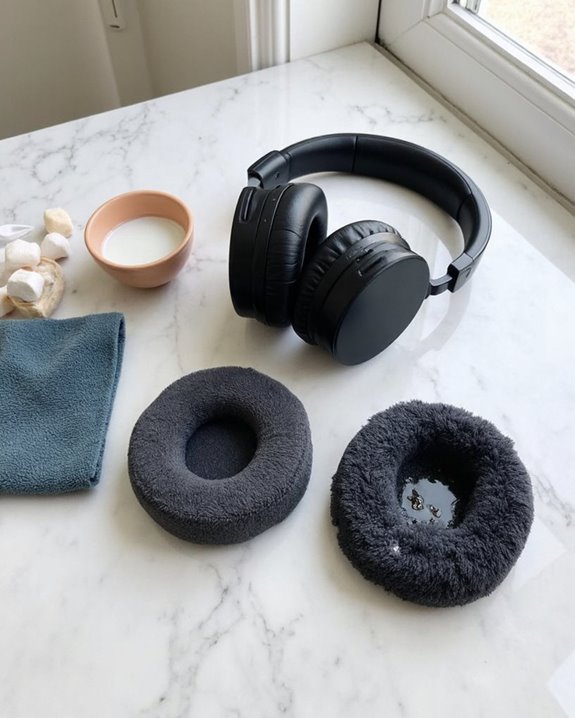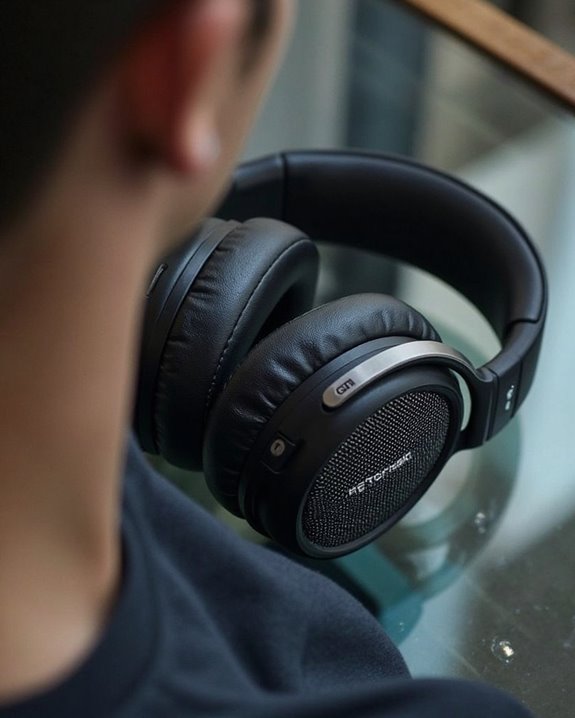Bluetooth headphones emit non-ionizing radiation at substantially lower levels than cell phones. Current scientific evidence shows no conclusive link between Bluetooth usage and serious health concerns like cancer or cognitive impairment. Research remains limited on long-term effects, especially for children. To minimize potential risks, experts recommend taking regular breaks, using lower power settings, and occasionally alternating with wired alternatives. Understanding proper usage guidelines can help users make informed decisions about their personal exposure levels.
Key Takeaways
- Bluetooth headphones emit non-ionizing radiation at lower levels than cell phones, staying within regulatory safety limits.
- Scientific evidence shows no significant connection between Bluetooth exposure and brain tumors or cognitive impairment.
- The World Health Organization classifies radiofrequency radiation as “possibly carcinogenic” based on limited evidence.
- Proximity to the head during prolonged use raises concerns about cumulative radiation exposure effects.
- Using wired headphones, taking breaks, and keeping devices on low power settings can minimize potential risks.
How Bluetooth Radiation Works
Bluetooth technology operates on specific radio frequencies that transmit data wirelessly between devices. These devices communicate within the 2.400 GHz to 2.4835 GHz range of the ISM band using 79 different channels, each 1 MHz wide.
Bluetooth employs Frequency Hopping as a key security feature, changing frequencies up to 1,600 times per second. This technique not only reduces interference from other devices operating in the same frequency range but also enhances connection stability and security by generating random frequency patterns for each new connection.
Antenna Design plays a vital role in how Bluetooth radiation is emitted and directed. The RF signals generated by Bluetooth headphones operate at considerably lower power levels than cell phones, resulting in lower radiation intensity. This design consideration helps guarantee these devices maintain radiation emissions well below regulatory safety limits while maintaining effective wireless communication.
The Connection Between Bluetooth Headphones and Thyroid Nodules

Recent research has sparked concern among health professionals regarding wireless technology worn close to the body. Studies analyzing data from 600 questionnaires have established a significant correlation between prolonged Bluetooth headset use and increased thyroid nodule risk.
The proximity of these devices to the thyroid gland appears to be a critical factor. Non-ionizing radiation emitted by Bluetooth headphones may affect thyroid hormones through cumulative exposure, particularly as cellular repair mechanisms decline with age.
Nodule symptoms often develop gradually and may go unnoticed until more advanced stages. Research employing advanced statistical methods like SHAP confirms that daily usage duration directly impacts risk levels.
Health authorities recommend limiting exposure time and maintaining distance between wireless devices and the thyroid to mitigate potential health impacts while further research investigates the underlying biological mechanisms.
Current Scientific Understanding of Cancer Risk
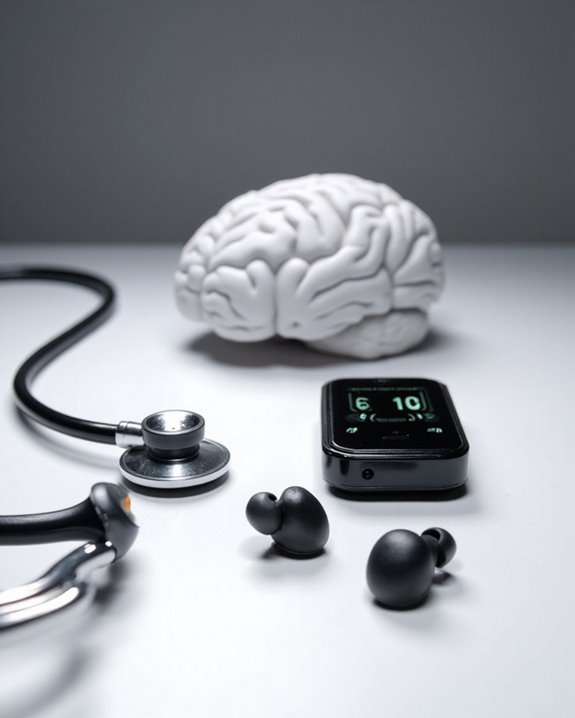
While the public remains concerned about potential health risks, the scientific community has not established a definitive link between Bluetooth headphones and cancer. The World Health Organization classifies radiofrequency electromagnetic fields as “possibly carcinogenic,” though this classification is based on limited evidence.
Regarding oncogenic effects, Bluetooth devices emit non-ionizing radiation at substantially lower levels than cell phones. This fundamental difference influences potential risk factors when evaluating cancer development. Most epidemiological studies have not demonstrated a significant connection between Bluetooth usage and increased brain tumor incidence.
The scientific consensus maintains that current evidence does not strongly support causal links between Bluetooth exposure and cancer. However, researchers acknowledge the need for additional long-term studies to thoroughly understand potential biological interactions and address ongoing public health concerns.
Potential Effects on Brain Health and Cognition
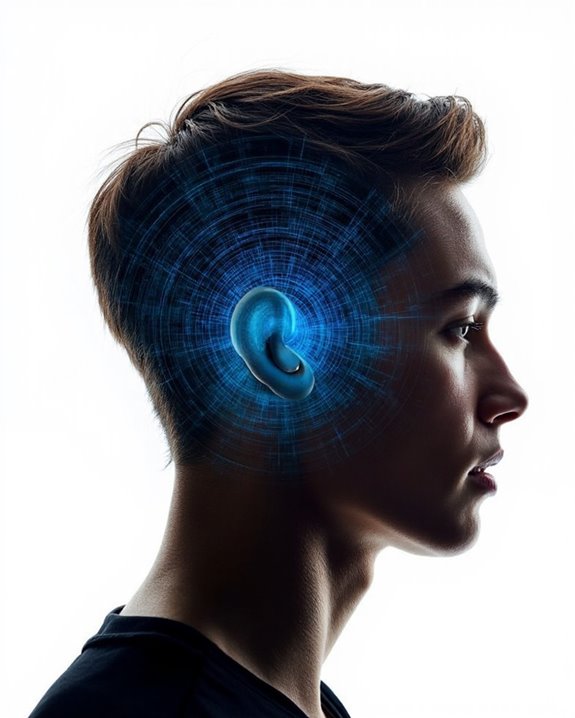
How does electromagnetic radiation from wireless devices affect our neural functioning and cognitive abilities? Current scientific evidence reveals no significant connection between Bluetooth headphone use and cognitive impairment. Studies examining auditory nervous structures have found no short-term effects from the non-ionizing radiation emitted by these devices.
Despite public concerns, research has not established links between Bluetooth EMFs and neurological symptoms or changes in neural plasticity. The radiation levels are substantially lower than mobile phones, positioning them within safety guidelines established by health organizations.
Research gaps remain concerning long-term exposure effects, particularly in developing brains of children and adolescents. While Bluetooth headphones are generally considered safe for brain health based on available evidence, continued monitoring and thorough studies are essential to address remaining questions about extended use.
Daily Usage Guidelines for Minimizing Exposure
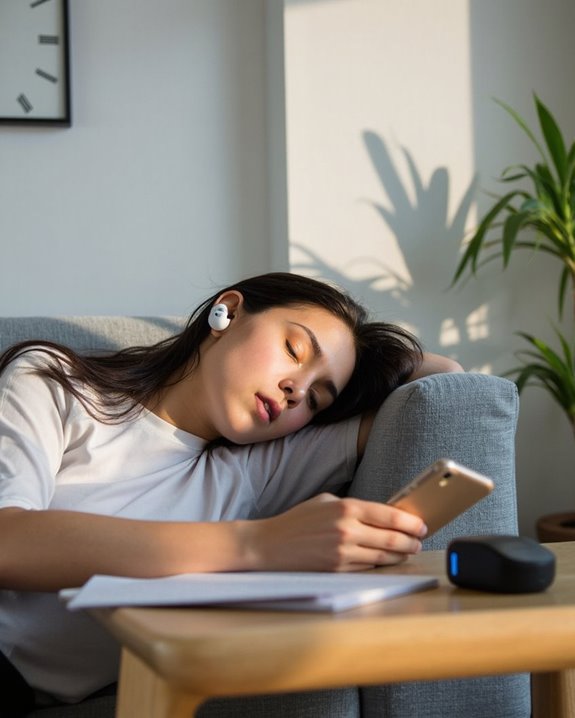
Three essential strategies can help users minimize potential health risks when using Bluetooth headphones. First, implementing Volume Guidelines helps prevent noise-induced hearing loss—sound levels should remain below 70 dB for extended listening, as volumes exceeding 85 dB can damage hearing after two hours of exposure.
Second, establishing Break Schedules allows ears to recover from auditory fatigue. Experts recommend taking 5-10 minute breaks every hour, even when listening at moderate volumes. These intervals help reduce cumulative exposure to non-ionizing radiation.
Third, proper device positioning matters. Users should select the lowest Bluetooth power setting necessary for connection and keep devices away from the body when not in active use. Following manufacturer guidelines regarding safe usage limits further minimizes potential radiation exposure.
Additionally, using ear protection with a suitable Noise Reduction Rating can help maintain hearing health in loud environments such as concerts or events.
Key Research Findings and Limitations

The scientific understanding of Bluetooth headphone safety remains complex and evolving, with recent studies yielding both reassuring and concerning results. While numerous studies indicate the non-ionizing radiation from Bluetooth devices poses minimal risk, emerging research has identified a potential link between prolonged usage and thyroid nodules.
Several methodological challenges affect current research validity. Research bias frequently appears in self-reported usage data, while funding sources may influence study design and interpretation of results. Most investigations lack longitudinal components necessary to assess cumulative effects.
Additionally, significant variability exists between different Bluetooth devices and their emission levels. Current studies often employ descriptive statistics rather than more rigorous analytical approaches, limiting the strength of conclusions that can be drawn about causality between Bluetooth headphone usage and health outcomes. Moreover, many wireless kids headphones incorporate Bluetooth 5.2 connectivity designed specifically to minimize potential risks for younger users.
Special Considerations for Long-Term Users

Long-term users of Bluetooth headphones face unique health considerations that merit special attention, particularly as research continues to evolve regarding non-ionizing radiation exposure. Recent studies have identified a correlation between prolonged daily use and increased risk of thyroid nodules, with Aging Factors greatly influencing susceptibility.
While Bluetooth emissions fall below regulatory safety thresholds, the cumulative effects of years of exposure remain inadequately studied. Experts recommend implementing Preventive Health measures, including:
- Limiting daily usage duration
- Alternating between Bluetooth and wired audio devices
- Keeping devices away from the head when not in use
- Scheduling regular health screenings
These precautions are especially important for individuals who rely on Bluetooth technology professionally, as their cumulative exposure may substantially exceed that of casual users. Additionally, choosing headphones with Bluetooth 5.0+ connectivity can help minimize power consumption and reduce prolonged exposure to emissions.
Alternative Options for Health-Conscious Consumers

Given the concerns surrounding Bluetooth radiation exposure, health-conscious consumers increasingly seek safer alternatives that minimize potential risks while maintaining audio functionality. Traditional wired headphones offer substantially reduced EMF radiation while often delivering superior sound quality. Air tube headphones represent an innovative middle ground, converting electrical signals to acoustic waves before they reach the ear.
For those prioritizing Sustainable Alternatives, wired options typically last longer, consume less energy, and generate minimal e-waste compared to their wireless counterparts. Manufacturers have responded with advanced Ergonomic Designs featuring improved comfort and durability. Modern wired and air tube models incorporate innovative materials that enhance the listening experience without compromising health considerations.
The market for these alternatives continues expanding as consumers become more informed about potential long-term health implications of wireless technology.
Frequently Asked Questions
Do Children Face Higher Health Risks From Bluetooth Headphones?
Children face potentially higher health risks from Bluetooth headphones due to greater pediatric absorption of radiofrequency radiation. Their developing bodies and smaller head sizes allow deeper penetration of electromagnetic fields compared to adults.
Can Bluetooth Radiation Affect Fertility or Pregnancy Outcomes?
Some research suggests Bluetooth radiation may impact fertility through decreased sperm quality and motility in men. Studies also indicate potential effects on fetal development, though evidence remains limited and more standardized research is needed.
How Do Bluetooth Earbuds Compare to Over-Ear Headphones for Safety?
Like choosing between distant thunder and a close whisper, earbud design places radiation sources closer to the brain than over-ear comfort. However, both emit minimal non-ionizing radiation that falls within safety guidelines despite their different placements.
Do Certain Medical Conditions Increase Sensitivity to Bluetooth Radiation?
Some individuals with chronic sensitivities or allergy reactions may experience increased sensitivity to electromagnetic fields from Bluetooth devices, though scientific evidence remains limited regarding specific medical conditions that definitively increase susceptibility to Bluetooth radiation.
Can Bluetooth Headphones Interfere With Medical Devices Like Pacemakers?
Bluetooth headphones can indeed interfere with medical devices like pacemakers. Pacemaker safety concerns arise from magnetic components in headphones. Device risks are minimized by maintaining at least 6 inches distance from implanted medical technology.


